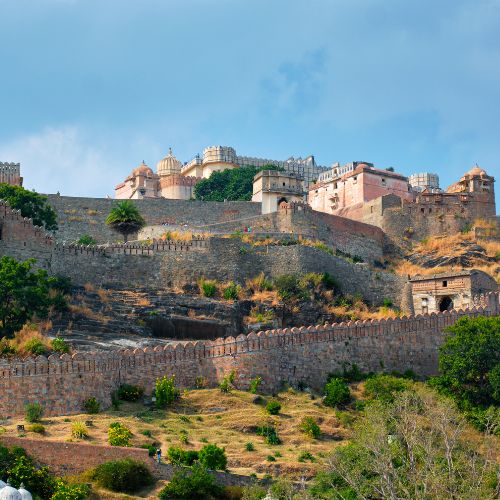3 World Heritage Sites to visit in New Delhi, India
Delhi, one of the oldest cities in the world, boasts three UNESCO World Heritage Sites that showcase its rich history and architectural marvels:
- Red Fort Complex
- Humayun’s Tomb
- Qutb Minar and its Monuments
View on Google Map
Red Fort Complex

The Red Fort or Lal Qila is a historic fort in the Old Delhi neighbourhood of Delhi, India, that historically served as the main residence of the Mughal emperors.
The Red Fort Complex was built as the palace fort of Shahjahanabad – the new capital of the fifth Mughal Emperor of India, Shah Jahan.
Named for its massive enclosing walls of red sandstone, it is adjacent to an older fort, the Salimgarh, built by Islam Shah Suri in 1546, with which it forms the Red Fort Complex.
The private apartments consist of a row of pavilions connected by a continuous water channel, known as the Nahr-i-Behisht (Stream of Paradise).
The Red Fort is considered to represent the zenith of Mughal creativity which, under the Shah Jahan, was brought to a new level of refinement. The planning of the palace is based on Islamic prototypes, but each pavilion reveals architectural elements typical of Mughal building, reflecting a fusion of Persian, Timurid and Hindu traditions.
The Red Fort’s innovative planning and architectural style, including the garden design, strongly influenced later buildings and gardens in Rajasthan, Delhi, Agra and further afield.
Humayun’s Tomb

Humayun’s tomb is the tomb of Humayun, the second emperor of the Mughal Empire, in Delhi, India. It was the first garden-tomb on the Indian subcontinent and the first structure to use red sandstone at such a scale.
The tomb is located in Nizamuddin East, Delhi, India, close to the Dina-panah Citadel, also known as Purana Qila (Old Fort), that Humayun found in 1538.
Humayun’s tomb was commissioned by Humayun’s first wife and chief consort, Empress Bega Begum under her patronage in 1558, and designed by Mirak Mirza Ghiyas and his son, Sayyid Muhammad.
The tomb was declared a UNESCO World Heritage Site in 1993.
Qutb Minar and its Monuments

The Qutb Minar, also spelled Qutub Minar and Qutab Minar, is a minaret and “victory tower” that forms part of the Qutb complex, which lies at the site of Delhi’s oldest fortified city, Lal Kot, founded by the Tomar Rajputs. It is one of the most visited tourist spots in the city.
Built in the early 13th century, a few kilometres south of Delhi, the red sandstone tower of Qutb Minar is 72.5 m high, tapering from 2.75 m in diameter at its peak to 14.32 m at its base, and alternating angular and rounded flutings. It can be compared to the 62-metre all-brick Minaret of Jam in Afghanistan, of c. 1190, which was constructed a decade or so before the probable start of the Delhi tower.
The surrounding archaeological area contains funerary buildings, notably the magnificent Alai-Darwaza Gate, the masterpiece of Indo-Muslim art (built in 1311), and two mosques, including the Quwwatu’l-Islam, the oldest in northern India, built of materials reused from some 20 Brahman temples.
It is a UNESCO World Heritage Site since 1993.



